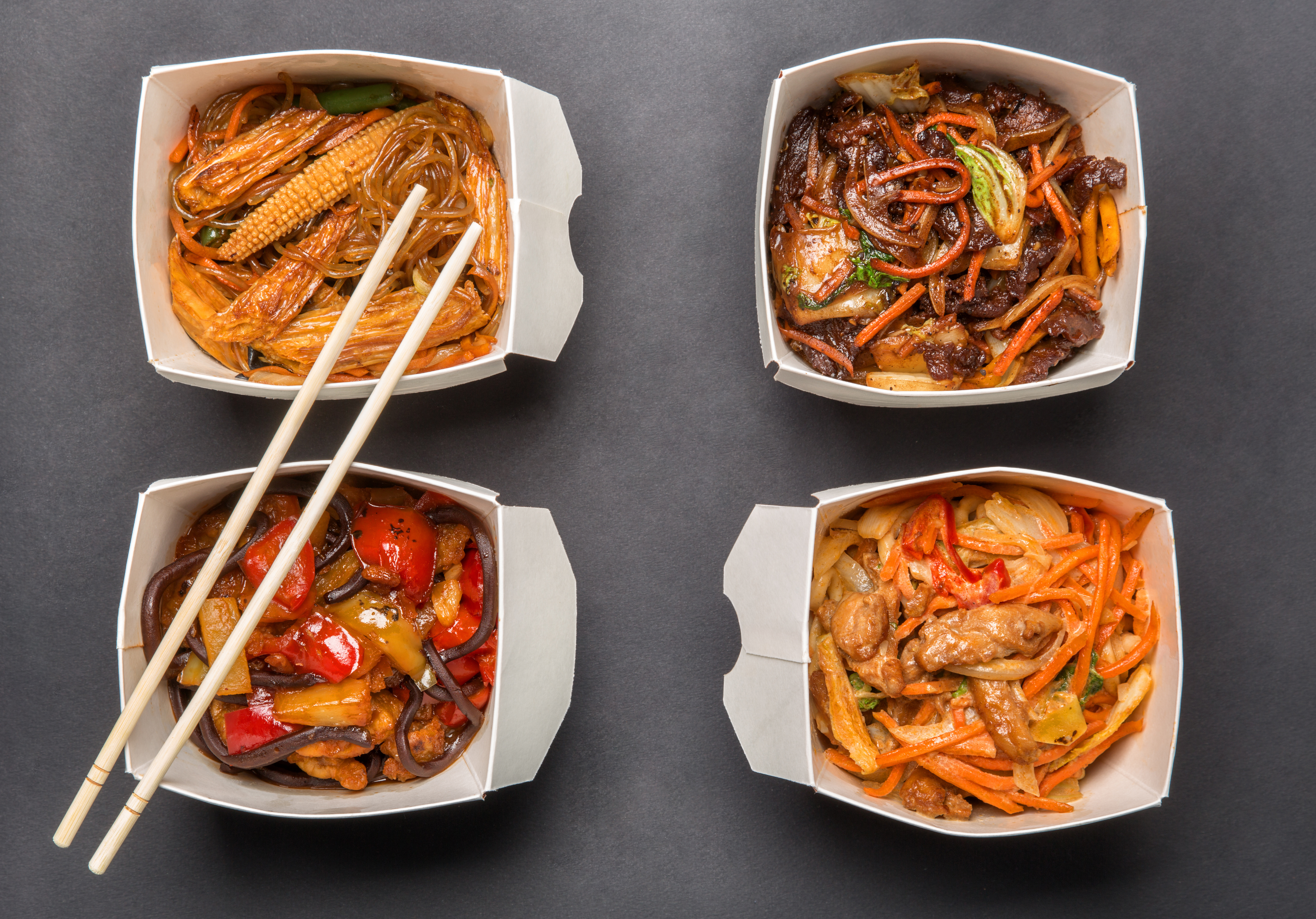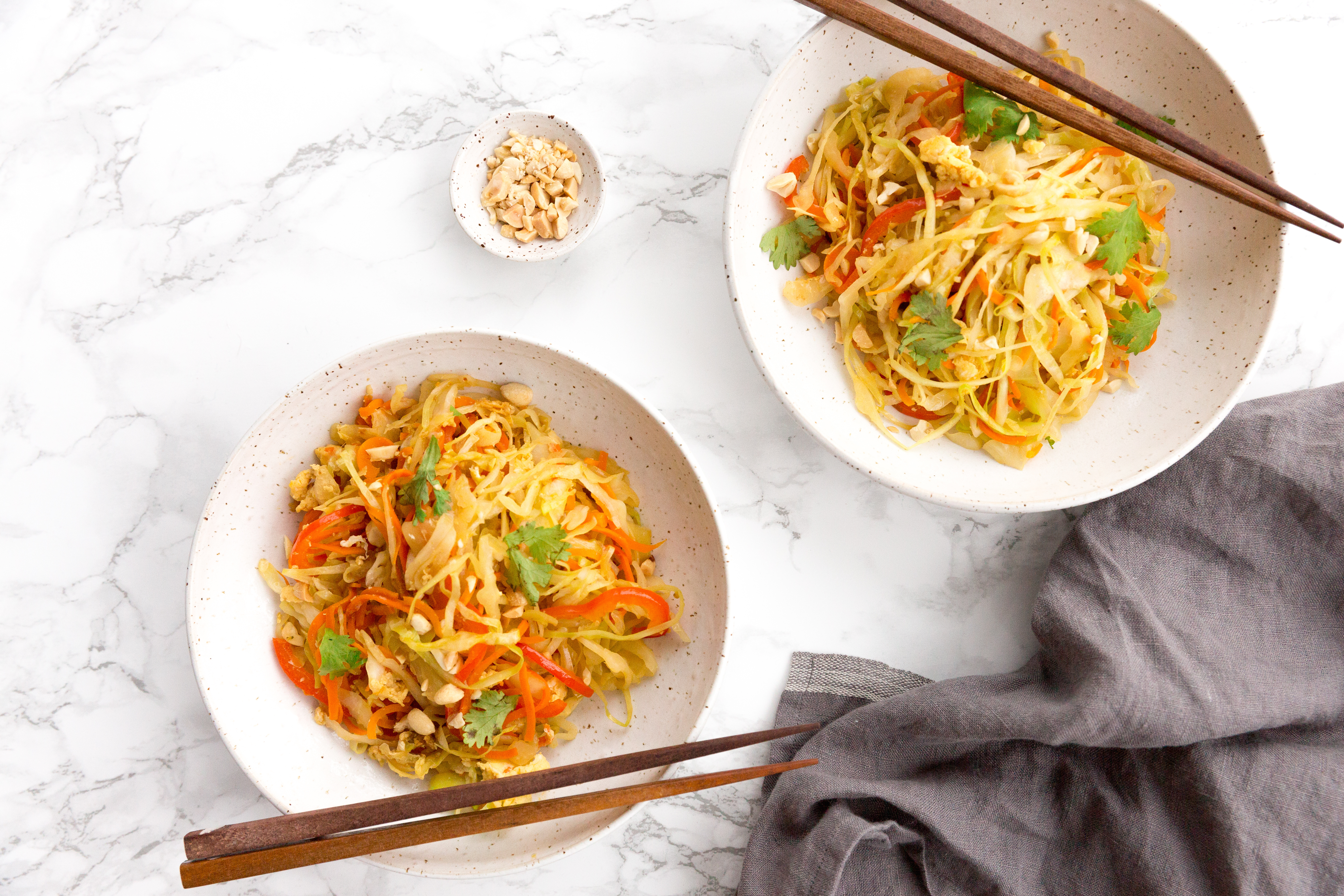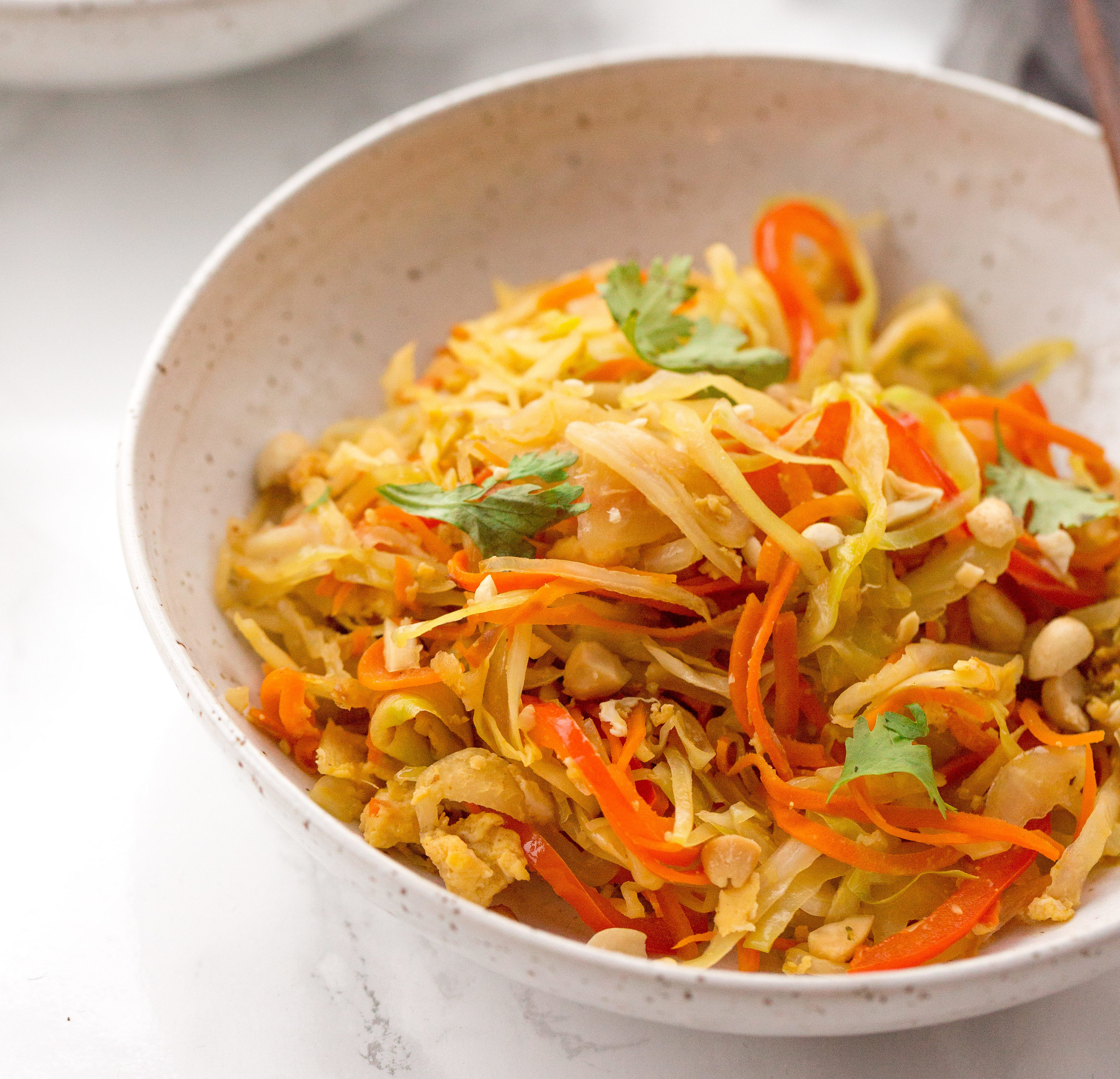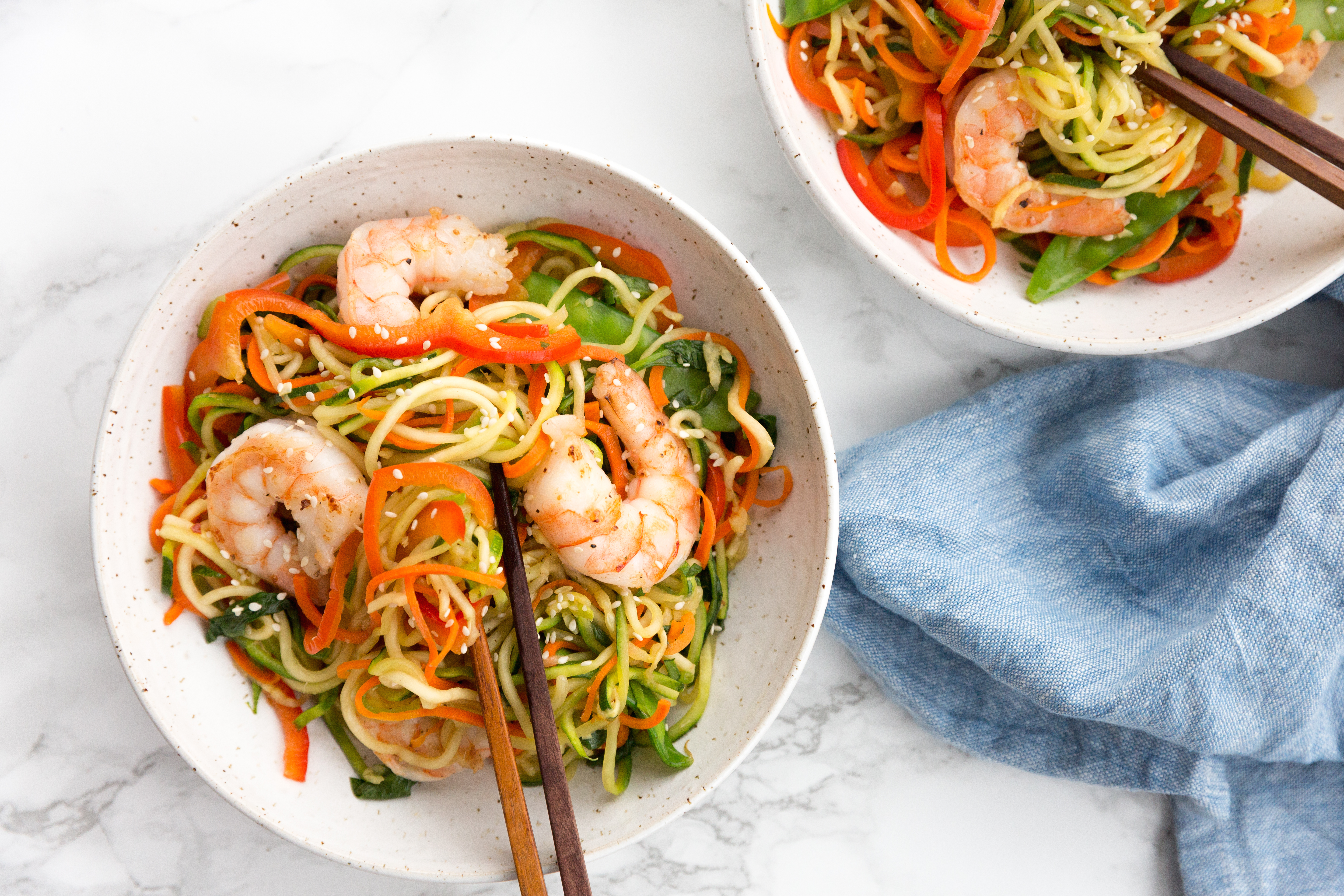Prepare to be inspiralized, Asian Takeout Style.

Recipe collab and pro tips for expert veggie spiralizing
Chew on this: we teamed up with Ali Maffucci of Inspiralized to bring you two delicious #FFACTORAPPROVED spiralized dishes. In case you’re not familiar with Ali, she’s the mastermind behind one of the most popular and easy to use spiralizers on the market today, the Inspiralizer. Ali is an F-Factor success story too, as embracing the F-Factor method helped her along with her postpartum health journey (which you can read more about here).
Now on the F-Factor-fiber bandwagon, a healthy, spiralized re-make of traditionally unhealthy dishes was undoubtedly in order. We got to talking about what dishes F-Factor fans really wanted and soon enough the choice was clear, we’d take on takeout. Two classic takeout recipes recreated to be actually healthy so you can enjoy guilt-free was our mission. It’s a takeout fake out, Asian style!
Both dishes are tasty and pretty simple to make–neither should take longer than 30-40 minutes to prepare (beat that, Seamless!). And where spiralized veggies are the star here, you can rest assured that these dishes are fiber-packed and low carb too.
WHAT YOU’LL NEED/ WON’T NEED
As mentioned above, these are made using Ali’s Inspiralizer Pro. If you don’t have a spiralizer, no need to fret, you can still make these recipes! Many markets sell pre-spiralized vegetables now, and you can absolutely mimic what a spiralizer does with different gadgets too. If you have a different spiralizer, that’s fine too. Just follow the manufacturer’s directions to mimic the noodle shapes in the photos of these recipes with the appropriate blades.
- A julienne peeler makes spaghetti-style noodles
- A vegetable peeler makes thicker, fettuccine-like noodles
- A mandolin can be used for different noodle shapes
- Use a Chef’s knife to the best of your ability to hand slice to create the desired noodle shapes
If you are using the Inspiralizer, it’s a pretty cool gadget (which we learned all about from Ali, herself). There is a part of it called the Noodle Twister which you can use to change the blades to make different noodle shapes. Blade A is great for shredding vegetables (like cabbage) or making big ribbon-like noodles (great for making lasagnas with zucchini noodles, for example.) Blade D makes a standard spaghetti-shaped noodle, and Blades B and C make thicker spaghetti noodles–you could say Blade B makes a fettuccine noodle and Blade C is used for a thick linguine.
Now that that’s out of the way, who’s ready for some (fake) takeout! Inspired (or should we say inspiralized) by some of our favorite dishes from the local Chinese and Thai restaurants, we’ve got both pad thai and lo mein for you.
TAKEOUT FAKE OUT – LET’S GET COOKING

The first dish is a Vegetarian Cabbage Pad Thai and right here is the only place you can get it.
 Between the noodles and sauce, your average pad thai dish can set you back at least 580 calories and 102g of carbs (an order from Asian-themed eatery P.F. Changs is well over 1000 calories and with +180g carbs). Our version? Less than 250 calories per serving, and no more than 15g of carbs.
Between the noodles and sauce, your average pad thai dish can set you back at least 580 calories and 102g of carbs (an order from Asian-themed eatery P.F. Changs is well over 1000 calories and with +180g carbs). Our version? Less than 250 calories per serving, and no more than 15g of carbs.
What’s great about this recipe is that you can add whatever protein to it that you’d like too. You can also add more vegetables into the mix, like broccoli or mushrooms, to up the fiber content even more for minimal calories. Disclaimer: this recipe does use fish sauce, which usually contains a small amount of anchovies. If you’re a vegan, or a vegetarian that does not eat products derived from animals whatsoever, you’re going to want to find a substitute fish sauce. Also, to make this dish gluten-free, simply swap the soy sauce out for coconut aminos or tamari).
To journal this recipe in your F-Factor Journal: 0g carb, 5g fiber
The second delicious Asian-takeout-inspired dish recipe is Shrimp Lo Mein with Zucchini Noodles, and it is quite the upgrade compared to the traditional version of the dish. Where a shrimp lo mein from P.F. Changs contains 880 calories and 130g carb, ours is an entire 600 calories and 110g of carbs less*! Not only is our take on this one a fraction of the calories, carbs and fat of traditional lo mein, but eating it won’t leave you feeling like a bloated balloon of MSG either–a common dreaded aftereffect of ordering in from your local Chinese restaurant. Like the pad thai, you can customize this recipe to your liking by swapping out the shrimp for whichever protein your heart desires (chicken, pork, tofu). To get this recipe click here.

To journal this recipe in your F-Factor Journal: 2g carb, 7g fiber
ONE LAST THING
These recipes will have you spiralizing cabbage, red bell peppers, carrots and zucchini. To truly set you up for success in spiralizing your way to a healthy takeout-inspired meal, we spoke to Ali to get her pro tips on manhandling a spiralizer. Be sure to check those out
From Ali Maffucci, CEO and Founder of Inspiralized CABBAGE: BELL PEPPERS: CARROTS: ZUCCHINI: *Nutritional comparison calculated based on making recipe with All-U-Lose honey, a ultra low calorie honey-flavored sugar alternative/ sweetener, which recipe on Inspiralized.com does not specify.